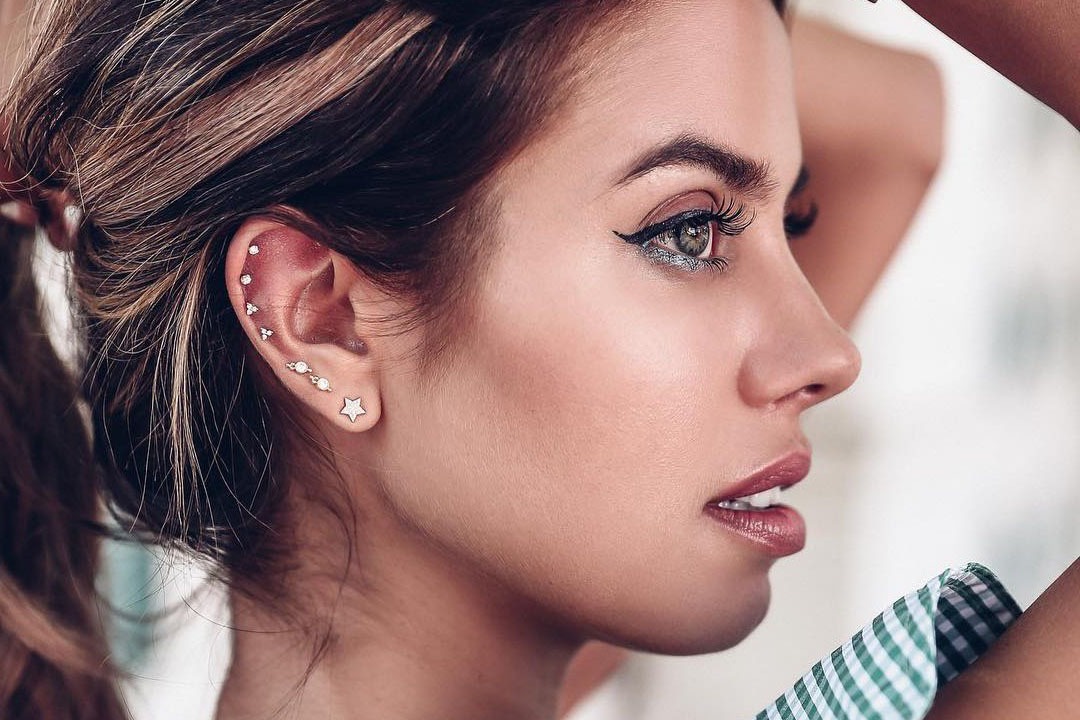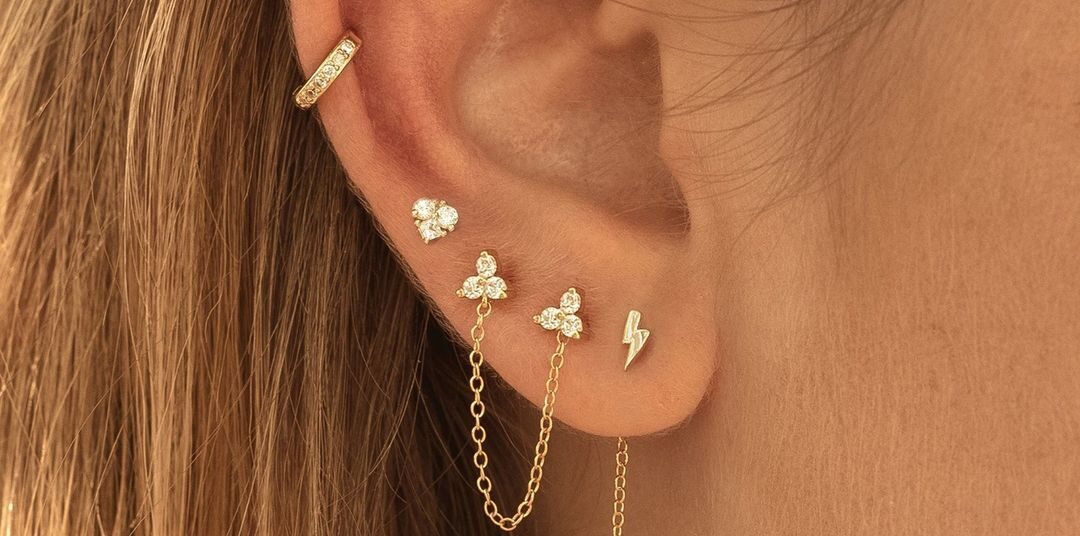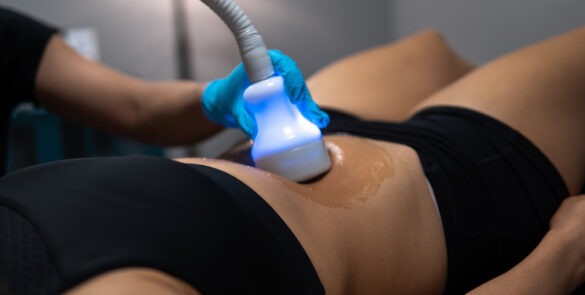
Ear Piercings
At OM Studio, we help you upgrade your earrings with safe, professional ear piercing services using needles. We do not use guns! We have a wide range assortment of affordable priced earrings. To schedule an appointment click link below.
Ear Piercing Areas
Lobe: The lobe is the lower section of the ear, which is one of the most common piercings.
Helix: The helix is positioned in the upper cartilage of the ear.
Forward Helix The forward helix is placed on the curve on the outer portion of the ear.
Rook: The Rook is located in the cartilage of the upper ear. The rook piercing is performed in a vertical manner, allowing the rings and curved balls to face downward.
Daith: The daith is located within the inner fold above the ear canal. This is located between the rook and tragus, placed where the outer ridge of your ear meets your inner ear. Daith piercings usually are forward facing, so that the stones are clearly visible.
Tragus: The tragus is positioned on the outer cartilage area, which is located in the sector of the triangular flap. It is above the lobe and is the harder section of the ear on the side of your face.
Antitragus: The antitragus is in the outer cartilage area, and is the triangular flap above the lobe, opposite to the tragus piercing.
Conch: The conch is located in the middle section of the ear. This piercing can be performed on the inner or outer portion to the ear. The inner conch is located in the lower cartilage, while the outer conch is located sits in the upper area of the cartilage.
Septum: The middle part of the nose. Our huggies and clickers are great options for septum piercings.
Frequently Asked Questions
What type of piercings do you do?
OM Studio only pierces ears.
Do you pierce with needles or guns?
We pierce with single-use needles and never guns.
All our piercings are done with a single-use, autoclave-sterilized needle. Needle piercings result in less tissue trauma and quicker healing time than a gun.
What is your piercing jewelry made of?
All of our piercing jewelry is made of high-quality, implant-grade metals: titanium, 14k or 18k gold. All of our piercing studs also have flat back titanium labrets.
How many piercings can I get at once?
For safety reasons and optimal healing, we allow you to get up to two piercings at once.
We recommend giving your years at least 6-8 weeks to heal before getting additional piercings.
What jewelry can I get pierced with?
We only pierce with new OM piercing jewelries. You will have options while taking into consideration your unique ear anatomy.
All of OM jewelry is made of high-quality, implant-grade metals, titanium, 14k to 18k gold and use a flat-backed labrets.
We do not pierce with butterfly-back earrings as it is not safe for piercing or healing process.
Our OM piercing jewelry is currently only available in-store or on our shop online at OM Store.
How much will it cost?
Anyone with the conditions below should not do this treatment:
• Kidney disease or dialysis
• Pregnant women
• Severe diabetes
• Undergoing chemotherapy
• Inflamed, infected, or swollen areas of skin
Does OM Studio do body piercings?
We only offer ear piercings at OM Studio.
How old do I have to be to get pierced at OM Studio?
OM Studio technicians pierce ages 2 and up. Any clients under 18 must bring a parent or legal guardian who will provide a government-issued ID to your appointment.
Who are your piercers/how are they trained/are they certified?
All our piercing technicians have been trained and are certified in blood-borne pathogens and CPR.
How long will my ear piercings take to heal?
Healing is subjective and is dependent on factors such as your overall health, sleep and stress levels, and your aftercare regimen.
Typically ear lobe piercings take around 8 weeks, while upper or inner ear piercings take between 6-12 months to fully heal.
You’ll know your ear is healed once any discharge, swelling, redness, flaking, or soreness stops.
How you can take of your ear piercings.
Wash your hands thoroughly prior to cleaning or touching your piercing for any reason.
Spray saline or run bottled water or distilled water over the front and back of your piercing 1-2 times daily, but don’t over do it!
Use non-woven gauze or spraying saline directly onto your piercing.
During healing, it is not necessary to turn or rotate your jewelry.
You’ll know your ear is healed once any discharge, swelling, redness, flaking, or soreness stops.
Is my piercing infected or is it normal?
It’s totally normal to experience slight bleeding, “crusties” (or dead skin cells), swelling, tenderness, itching, bruising, or soreness. These symptoms will typically only last a few weeks.

